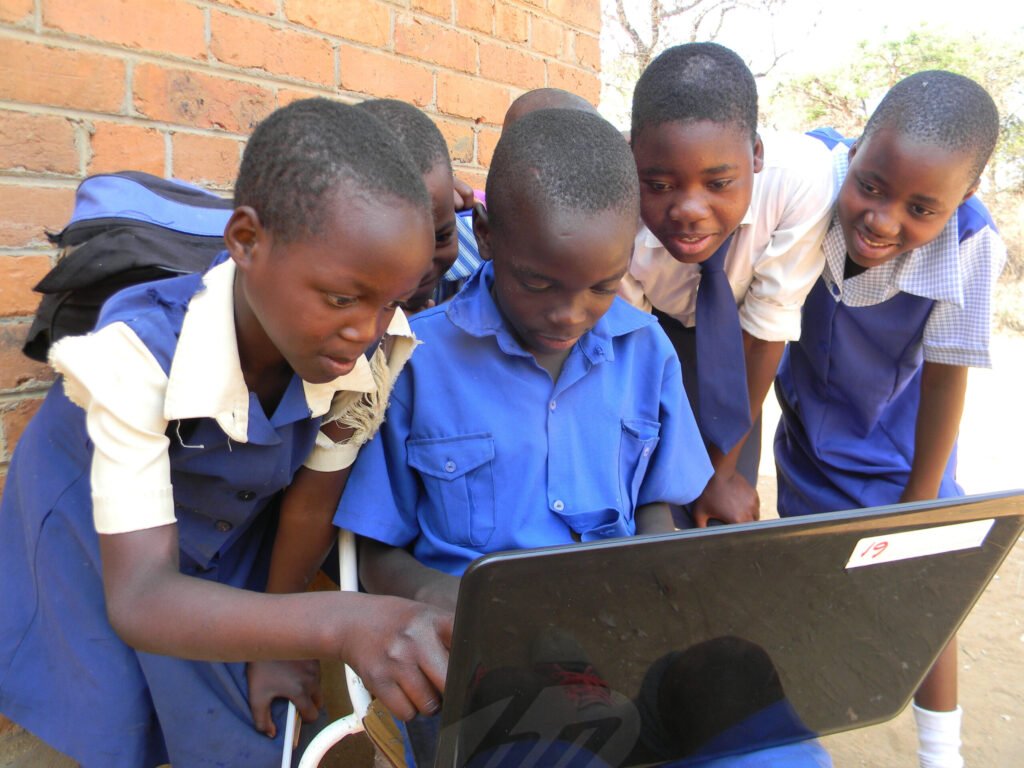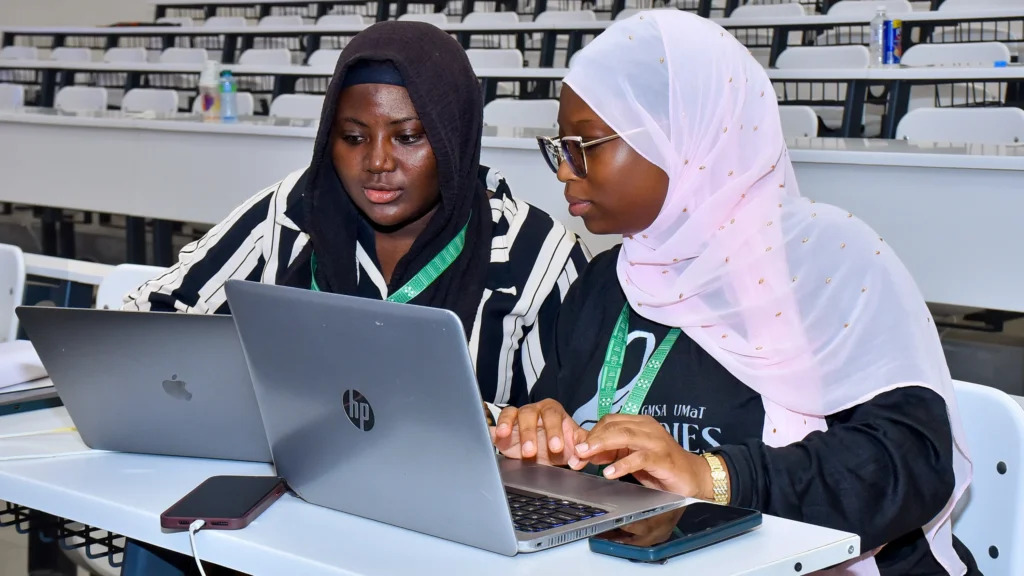Imagine a classroom in a remote village in Nigeria or Kenya: limited textbooks, overcrowded desks, intermittent power, and children speaking diverse local languages. Now imagine that same classroom with AI tools that communicate in Hausa or Swahili, adjust lessons to students’ pace, and understand cultural references from their daily lives. That’s no longer a fantasy — it’s a necessary evolution. For artificial intelligence to truly transform classrooms across Africa, it must be localised. It must bend, adapt and respond to our languages, cultures, infrastructure realities, and the lived experiences of learners.
Global AI models today tend to reflect Western norms and languages — English, Mandarin, and French — largely trained on data from Western sources. However, this one-size-fits-all approach fails in multilingual, resource-constrained African settings. Local idioms, dialects, stories, and daily realities are often misunderstood or ignored. When AI can’t relate to the people it serves, not only does its value drop, but the risk of exclusion increases. Language barriers are not abstract—they affect comprehension, engagement, and identity.
Adapting AI to Africa’s classrooms means designing tools that are offline-capable, low-bandwidth friendly, capable of switching between local languages, embedding local culture, and built with local educators’ input. It also means integrating real-world constraints like irregular electricity, minimal internet, and teacher shortages into the design. Where these elements are present, we see real gains. In Ghana, Kenya, and Nigeria, pilot programs using AI-supported personalised learning showed considerable improvement in literacy, numeracy, and overall engagement. Girls often gain disproportionately, narrowing long-entrenched gender gaps.

Table of Contents
The Barriers We Must Overcome
Bending AI to Africa’s educational needs is more than a technical challenge — it’s institutional and ethical. First, there’s language and data. African nations collectively host a third of the world’s languages, many oral, some without large written corpora. Most large language models (LLMs) struggle with these languages; data is scarce or hard to access. Translating education content into local languages isn’t enough if the model doesn’t understand idiomatic speech or cultural context.
Second, infrastructure and connectivity remain significant constraints. Many schools lack reliable electricity, internet, or even basic hardware like tablets or computers. Also, in rural or conflict-affected areas, mobile broadband penetration is low and internet costs are prohibitive.
Third, teacher training and institutional readiness lag behind. Teachers may not have been trained to use AI tools or to understand their limitations—about bias, about privacy, about ethical use. Education ministries often lack policies that safeguard student data or mandate local content development. Investment in AI literacy for educators and administrators is necessary.
Fourth, policy, regulation, and ethics are still emergent. Concerns about algorithmic bias, data ownership, privacy, and digital equity must be addressed in local policy frameworks. Also, African countries need national AI strategies that embed education as a core sector—rather than leaving AI to tech companies or external NGOs.
Localised AI in Action — Successes and Promising Models
Despite the challenges, many innovators and governments across Africa are already showing what is possible when AI is adapted well to local classroom realities.
Kwame for Science is one such example. Deployed in West Africa, this bilingual AI teaching assistant supports science education, aligning with national curricula and incorporating past exam questions. It allows students to filter questions by topic and year, offers explanations, and adjusts to student responses. In trials, it showed high accuracy in helping students get exam-style answers, and helped hundreds of students across dozens of countries
In Ghana, tools have been developed to assist teacher education programs. The “21st-Century Teacher Educator AI” for Ghana embeds local curricular content, languages (like Twi and Mampruli), and culturally relevant examples so that future teachers are prepared not only in AI literacy but also in cultural agility.
Other platforms such as M-Shule (Kenya) and uLesson (West Africa) deliver content via mobile and low-bandwidth formats. M-Shule even uses SMS-based learning and lightweight technologies so that students without smartphones or high internet access can still benefit.
Then there are policy frameworks and strategic initiatives. The African Union’s Continental AI Strategy (Sept 2024) places education centrally. Regional policy dialogues (for example, in Addis Ababa) are pushing for ethical governance, data protection, and regulatory frameworks for equitable AI deployment. UNESCO and other international organisations are supporting readiness assessments in several countries to help governments plan for AI-enabled education.

What’s Needed to Scale and Sustain Localised AI
To move from pilots to continent-wide impact, some key levers must be pushed hard:
- Increased investment in infrastructure and hardware, especially in rural and underserved areas. This includes reliable electricity (solar if needed), affordable internet, and devices for students and teachers. Only then can localised AI tools run reliably. Governments, donors, and the private sector must partner.
- Development and openness of local data and language resources. We must invest in collecting, annotating, and making accessible corpora in local languages. Community-led efforts, universities, linguistics departments, and NGOs should be supported to build datasets, translation tools, and voice recognition systems for African dialects.
- Teacher training and professional development programs focused on AI use in classrooms, cultural relevance, digital literacy, and ethics. The teacher is still central—not to be replaced by AI but to be empowered by AI.
- Robust policy, regulation, and ethical frameworks that protect learners, ensure privacy, guard against bias, and promote inclusion. Governments should develop national AI strategies with education as a pillar, embed data sovereignty, and engage local communities in decision-making.
- Design for low-resource, constrained environments. Platforms must work offline or with low bandwidth, adapt to intermittent power, and use simple devices like feature phones or tablets rather than assuming every student has a laptop.
- Local innovation and ownership. Africans must lead in building and adapting AI tools, not just as users but as creators. This means funding for startups, R&D in local universities, fostering partnerships across sectors, and promoting open source or commons-oriented models so more people can access and adapt AI.
- Scaling what works. Promising pilot programmes should be evaluated carefully, and those with evidence of success should be scaled up. Investments should be sustainable, avoid donor dependency, and aim for systemic change—embedding AI-enabled persons, curricula, and evaluation into education systems.

Conclusion
Africa is at a crossroads: adopt AI tools as imported packages, or adapt them to our languages, cultures, and realities so that they become powerful levers for transformation. Localised AI in education isn’t just about better test scores (though it can help with that) — it’s about dignity, relevance, and equity. It’s about ensuring children in remote villages learn in ways that connect with their lives; teachers in overstretched classrooms get tools that allow them to teach more effectively; and countries build their AI capacity from within.
As more localised AI models emerge, as policies take shape, and as infrastructure improves, classrooms across Africa can shift from “chalk-and-talk” to interactive, adaptive, culturally resonant learning environments. The path ahead will not be easy—resource constraints, policy gaps, language diversity, and training deficits are real. But the prize is great: a generation of learners equipped not only to survive in a rapidly changing world, but to shape it.
Join Our Social Media Channels:
WhatsApp: NaijaEyes
Facebook: NaijaEyes
Twitter: NaijaEyes
Instagram: NaijaEyes
TikTok: NaijaEyes




